 The University of Sheffield’s Researching Community Heritage project was funded by the AHRC Connected Communities programme to support community groups and organisations to develop research projects exploring their local heritage. Academics were matched with community researchers and encouraged to work together to develop co-produced projects. Groups applied to the Heritage Lottery Fund for financial support to develop the project, meaning that they retained autonomy and ownership of the projects and were not reliant on the university for funding. Projects included: working with a homeless charity for young people to research the history of the hostel they are based in; exploring links between the Peak District, India and Hindu culture through research into the cotton trade with Sheffield Hindu Samaj; and a project with Rotherham Youth Service working with Primary School children to find out more about the history of their area through creative approaches to history and archaeology. Continue reading
The University of Sheffield’s Researching Community Heritage project was funded by the AHRC Connected Communities programme to support community groups and organisations to develop research projects exploring their local heritage. Academics were matched with community researchers and encouraged to work together to develop co-produced projects. Groups applied to the Heritage Lottery Fund for financial support to develop the project, meaning that they retained autonomy and ownership of the projects and were not reliant on the university for funding. Projects included: working with a homeless charity for young people to research the history of the hostel they are based in; exploring links between the Peak District, India and Hindu culture through research into the cotton trade with Sheffield Hindu Samaj; and a project with Rotherham Youth Service working with Primary School children to find out more about the history of their area through creative approaches to history and archaeology. Continue reading
Category Archives: News
Caring for the Future Through Ancestral Time. Engaging the Cultural and Spiritual Presence of the Past to Promote a Sustainable Future.
Professor Michael Northcott, University of Edinburgh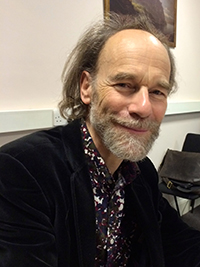
PI of Caring for the Future through Ancestral Time, funded under AHRC Care for the Future: Thinking Forward through the Past
The global spread of a consumer culture, through electronic forms of communication, multinational trade networks, and airplane and shipping containers, creates a culture of instantaneity which changes human perceptions of time. At the same time rituals which used to marked the passage of the years, and linked time’s passing to daily life, are declining. Many of these rituals were associated with the planting, tending and harvesting of crops as determined by the seasons. The culture of instantaneity reflects a growing disconnect between culture and nature, and between consumption and production. Continue reading
‘The Power and the Water’, the Power of Water and the Flows (Visible and Invisible) Connecting Energetic Environments and Landscapes
Professor Peter Coates, School of Humanities, University of Bristol
PI of The Power and the Water, funded under AHRC Care for the Future: Thinking Forward through the Past
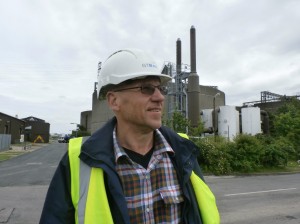
Peter at project partner Northumbrian Water’s Howdon Sewage Plant, Newcastle, on an unseasonably chilly day – even for the northeast – in June (photo: Jill Payne)
One of the places ‘The Power and the Water’ team visited during our gathering on Tyneside in June 2014 was the Baltic Centre for Contemporary Art, on the river’s Gateshead (south) bank. The exhibit that caught my attention was ‘Near Here’ by Nina Canell, who, a guidebook explains, is ‘fascinated by forces that affect us every day but that we can’t see with our eyes – things like electricity and air. If we can’t see them, how do we know they exist?’ Canell takes materials like cables, steel and water to create sculpture that, according to the Baltic’s press release, gives ‘substance to the intangible’. This strategy renders the invisible visible and brings the seemingly distant closer to us (near here?). The installation ‘Forgetfulness (Dense)’ consisted of a water-filled tank (raised on a frame like a display case) that contained a suspended length of underwater telecommunications cable which bore an uncanny resemblance to an oversized, particularly colourful liquorice all-sort. The combination of power and water appealed to me, as did the severed nature of the cable: a power supply cut off at both ends, disconnected from its source and destination. Continue reading
Integration and Integration Policy Roundtable Meetings
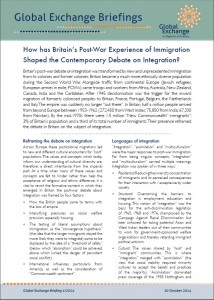 Integration and Integration Policy Roundtable Meetings
Integration and Integration Policy Roundtable Meetings
Following the highly successful ‘Making History Work’ seminars organised by AHRC Care for the Future, AHRC Translating Cultures, and Institute for Government, Andrew Thompson was asked to participate in the roundtable on 20 October 2014, ‘What is Integration?’
The following information and text is from http://www.compas.ox.ac.uk/globalexchange/working-with-the-department-for-communities-and-local-government/
COMPAS Oxford co-organised three roundtables on Integration and Integration policy with the Integration and Faith Division of the UK’s Department of Communities and Local Government, hosted at their London office. The aim was to inform understanding and stimulate debate on integration processes, outcomes and policy interventions.
What is Integration?
This roundtable explored differing concepts of integration processes, aims of integration policies and the history of policy approaches in the UK: highlighting integration as not one but a series of processes; the role of local versus national approaches and of mainstream versus targeted integration policies.
Briefings
- How has Britain’s Post-War Experience of Immigration Shaped the Contemporary Debate on Integration? – Andrew Thompson
- What are the main concepts and approaches within integration policy? – Varun Uberoi
- How has Britain’s integration debate developed since 2000? – Will Somerville
Thompson’s briefing can be downloaded here: Thompson Briefing, What is Integration – 20 Oct 2014
Drought, deluge and dearth: exploring British extreme weather events over time
Professor Georgina Endfield, University of Nottingham
PI of Weather Extremes, funded under AHRC Care for the Future: Thinking Forward through the Past
In 1952, climatologist Gordon Manley suggested that “if a census were taken of common topics of conversation amongst British people, it is very probable that the weather would take first place” (Manley, 1952:13). This statement is probably as true today as it was over sixty years ago, and while in no way being unique in this, it is fair to say that the British have a something of an obsession with the weather.
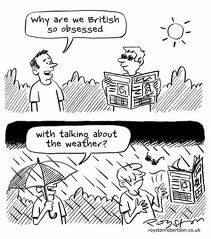 Yet the weather has arguably become an even more popular topic of conversation in recent years. In part, this is a function of narratives highlighting the apparently looming, apocalyptic climate changes that global society faces, but it may also be a result of rising concern over the impacts of anomalous, ‘extreme’ weather events such as droughts, floods, storm events and unusually high or low temperatures. While social and economic systems have generally evolved to accommodate some deviations from “normal” weather conditions, this is rarely true of extremes. Continue reading
Yet the weather has arguably become an even more popular topic of conversation in recent years. In part, this is a function of narratives highlighting the apparently looming, apocalyptic climate changes that global society faces, but it may also be a result of rising concern over the impacts of anomalous, ‘extreme’ weather events such as droughts, floods, storm events and unusually high or low temperatures. While social and economic systems have generally evolved to accommodate some deviations from “normal” weather conditions, this is rarely true of extremes. Continue reading
‘I am acutely aware of the responsibility of the artist’: An interview with Paula McFetridge, Kabosh theatre company
In this video artistic director Paula McFetridge introduces Kabosh theatre company and talks about how the Creative Industries Innovation Fund helped to create an app for the dramatic walking tour Belfast Bred.
Care for the Future Interview: Andrew Thompson explores with Paula McFetridge, Artistic Director of Northern Ireland’s Kabosh theatre company, the power of theatre to humanise the past and to hold up a different lens to what we think we know.
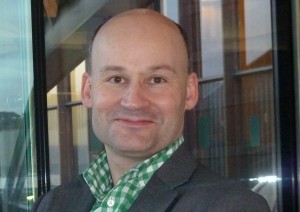 Andrew Thompson: You are the artistic director of a theatre company in Northern Ireland called Kabosh which is celebrating its 20th anniversary. Can you tell me more about Kabosh’s aims, the type of work you commission, and where you perform? Continue reading
Andrew Thompson: You are the artistic director of a theatre company in Northern Ireland called Kabosh which is celebrating its 20th anniversary. Can you tell me more about Kabosh’s aims, the type of work you commission, and where you perform? Continue reading
Concepts of Time and UNESCO World Heritage
Dr Andrea Rehling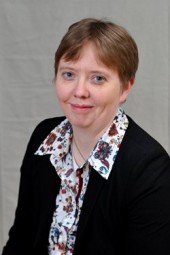
Leibniz-Institute of European History (IEG) Mainz
Project: Knowledge of the World – Heritage of Mankind: The History of UNESCO World Heritage
http://www.ieg-unesco.eu
In March 2013, the travel agent Hurlingham Travel in London unveiled the “most expensive and craziest” package holiday ever. The holiday is nearly two years in duration, costs around 1.2 million euros for two people, and includes visits to all of the then 981 UNESCO World Heritage sites in 160 states around the world. As its focus is on architectural remains and monuments, it has the character of a visit to an open air museum. To this extent, the journey offered also includes a kind of time travel that follows one specific narrative of time and history. The World Heritage list features the remnants of a cultural and natural history canonized by UNESCO and its advisory organizations This canon is based on a scientific concept of time which has emerged since the 1960s. It replaced the idea of the arrow of time, which was the temporal concept upon which the idea of linear successive stages of development had been based. The latter was replaced by a broader, pluralized, but nevertheless scientific, synchronized and naturalized understanding of time.
This canon is based on a scientific concept of time which has emerged since the 1960s. It replaced the idea of the arrow of time, which was the temporal concept upon which the idea of linear successive stages of development had been based. The latter was replaced by a broader, pluralized, but nevertheless scientific, synchronized and naturalized understanding of time.
Culture, Conflict and Post-Conflict symposium
Culture, Conflict and Post-Conflict symposium: See our feature here and read an interview with Kabosh theatre company’s Paula McFetridge.


